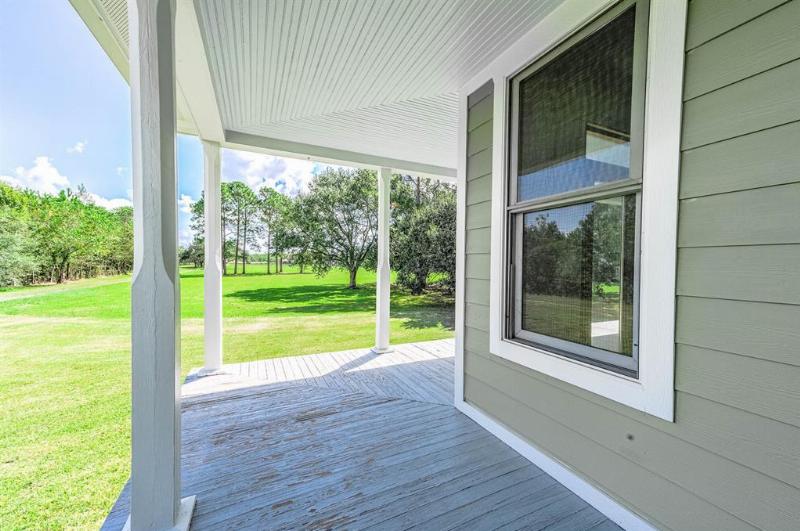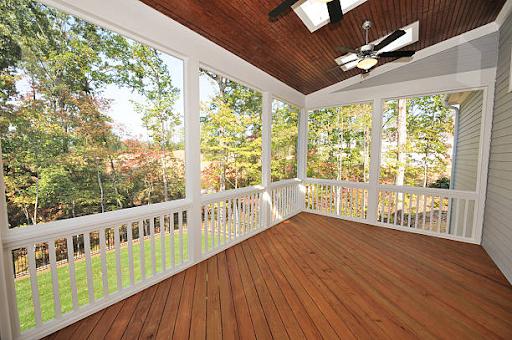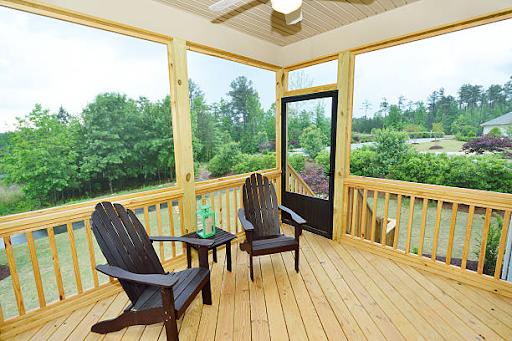How To Extend A Roof Over A Patio
Extending a roof over a patio can provide an excellent way to create a shaded outdoor space that you can enjoy year-round.
Whether you want to protect your patio from rain or harsh sunlight, adding a roof is an ideal solution.
Reasons To Extend A Roof Over A Patio
Extending a roof over a patio can provide many benefits to homeowners. some of the top reasons why you should consider extending a roof over your patio include:
- Protection from the elements
One of the most significant benefits of extending a roof over a patio is protected from the elements. A roof can shield you from rain, snow, and harsh sunlight, allowing you to enjoy your outdoor space regardless of the weather.
- More living space
By extending a roof over your patio, you can effectively create additional living space in your home. This extra space can be used for different purposes, such as a dining area, a relaxation space, or an outdoor kitchen.
- Added value to your home
Extending a roof over a patio can add value to your home. It is a somewhat inexpensive way to increase the living space in your home. It can also be an attractive feature for potential buyers if you decide to sell your home.
- Energy savings
A roof over your patio can also help reduce energy costs. The shade provided by the roof can keep your home cooler during the summer months, therefore, reducing the need to have air conditioning.
- Aesthetic appeal
A roof over a patio can enhance the appearance of your home’s exterior. It can add architectural interest and visual appeal to your home, making it more attractive and welcoming.
- Increased privacy
Extending a roof over a patio can also provide privacy. It can act as a barrier between your outdoor space and your neighbors or passersby, allowing you to relax and enjoy your patio in peace.
How To Build A Roof Over A Patio
You will have to hire a professional to build the roof unless you’re experienced in residential roofing construction. Here is a step-by-step guide for building a roof over a patio.
- Step 1: Determine the location and size of the patio
Before you start building your roof, you need to decide on the location and size of the patio.
Make sure the area is large enough to accommodate the preferred roof size and that it is a suitable location for an extension.
ProTip Takeaway: You will possibly also need to get permits from local authorities depending on the size and location of the project.
- Step 2: Measure the Area and Create a Plan
Once you have determined the location and size of the patio, measure the area and create a plan for the roof. The plan should include the dimensions of the roof, the type of material you will use, and the design of the roof.
- Step 3: Prepare the Area
Before starting the construction process, prepare the area by clearing the ground and making sure it is level.
Remove any existing structures such as an old patio cover or pergola to make way for the new roof.
- Step 4: Install support posts
The next step is to install the support posts for the roof. The posts will serve as the foundation for the roof and provide stability.
You can use metal or wooden posts depending on your preference, but ensure that they are strong enough to support the weight of the roof.
- Step 5: Install the roof beams
After installing the support posts, you can now install the roof beams. The beams will support the roof panels and provide structure to the roof. Make sure the beams are level and firmly attached to the support posts.
- Step 6: Install the roof panels
The panels can be made of different materials, such as metal, polycarbonate, or shingles. Ensure that the panels are properly attached to the beams and that they overlap to prevent water from seeping through.
- Step 7: Add finishing touches
You can add finishing touches to the roof such as gutters, downspouts, and trim. These features will help to protect the roof from water damage and give it a polished look.
Types Of Roofs For A Patio Extension
- Gable Roof: A gable roof is a popular choice for patios as it provides a classic look and is perfect for water runoff. It has two slanted sides that meet at a ridge in the center. This roof type allows for plenty of natural light and ventilation, making it ideal for outdoor living spaces.
- Hip Roof: A hip roof is another popular choice for patios and it has four sloping sides that meet at the top. This roof type provides excellent stability and can withstand high winds and heavy rain. It also provides a lot of shade and ventilation for outdoor spaces.
- Flat Roof: A flat roof is a modern and minimalistic option for patios, and it is usually made of concrete or rubber roofing materials. This roof type is easy to install and maintain, and it provides a smooth look to your patio area.
- Shed Roof: A shed roof is a single-sloping roof that is best for small patios. It provides a minimalist look and can be constructed with different roofing materials such as shingles, metal, or polycarbonate. This roof type is also cost-effective and easy to install.
Types of Patio Roofing Materials
There are several roofing materials available with some being better and stronger than others. Here are some of the most common types of patio roofing materials:
- Metal Roofing
Metal roofing is a popular choice because of its durability and resistance to fire, wind, and insects. It comes in a variety of colors and styles, including aluminum, steel, and copper. Metal roofs are light making them easy to install and maintain.
- Shingles
Asphalt shingles are a popular roofing material for patios because they are affordable, versatile, and easy to install. They come in a range of colors and styles, including traditional three-tab shingles and architectural shingles that mimic the look of slate or cedar.
- Tile Roofing
Tile roofing comes in a variety of materials, including clay, concrete, and slate, and can be customized to match the style of your home. Tile roofs are also energy-efficient and provide excellent insulation.
- Polycarbonate Roofing
Polycarbonate roofing is made of a thermoplastic material that is impact-resistant and provides UV protection. It is a lightweight, durable, and affordable option that comes in a variety of colors and styles, including clear, translucent, and opaque.
- Wood Roofing
Wood roofing provides a natural and rustic look to patios. It is a classic and timeless option that can be made from cedar, redwood, or other types of hardwood.
Wood roofs require regular maintenance and are susceptible to weather damage, but they can provide a unique and charming aesthetic to your outdoor living space.
ProTip Takeaway: When choosing a patio roofing material, consider the climate in your area, the architectural style of your home, and your budget.
Average Cost To Extend A Roof Over A Patio
The cost of extending a roof over a patio will depend on factors such as labor, size of the patio, type of material used, weather conditions, and the complexity of the design.
| Average cost | $5,000 to $20,000 or more |
| Design and planning | $500 and $5,000 |
| Permitting and inspection fees | $100 to $1,000 |
| Labor costs | $50 to $100 per hour |
The average cost of extending a roof over a patio can range from $5,000 to $20,000 or more, depending on the following factors.
- Design and planning:
Before starting the construction process, you may need to hire a designer or architect to create a plan for the roof extension. This can cost between $500 and $5,000.
- Permitting and inspection fees:
You might need to obtain permits from your local authorities before starting the project. The cost of permits and inspection fees can vary depending on your location and the size of the project but can range from $100 to $1,000.
- Material costs:
The cost of materials will depend on the type of roof you choose. For example, a metal roof can cost between $7 and $10 per square foot, while a shingle roof can cost between $5 and $10 per square foot. The cost of wood will also vary depending on the type and quality of the wood.
- Labor costs:
The cost of labor will depend on the complexity of the project and the hourly rate of the contractor. On average, labor costs can range from $50 to $100 per hour.
- Additional costs:
These costs may include the cost of adding gutters, downspouts, and trim, as well as the cost of removing any existing structures or debris. These costs can range from a few hundred dollars to several thousand dollars.
Are You Ready To Extend Your Patio?
Speak to the roof experts at Smart Remodeling LLC if you want a patio roof extension that is as durable, stylish, and functional. We pride ourselves on creating comfortable and adaptable outdoor spaces for you to enjoy. Contact us today for a free quotation.










